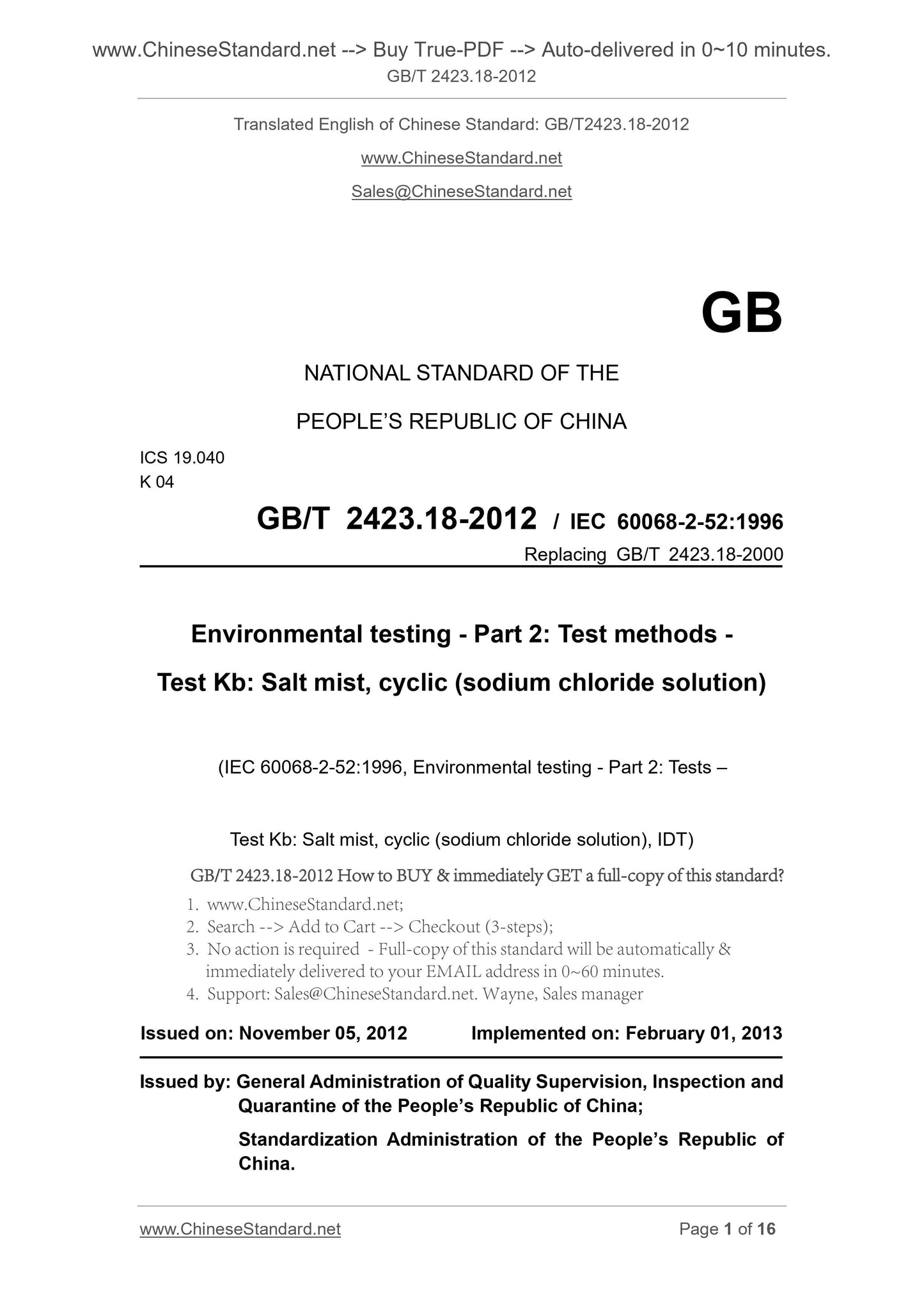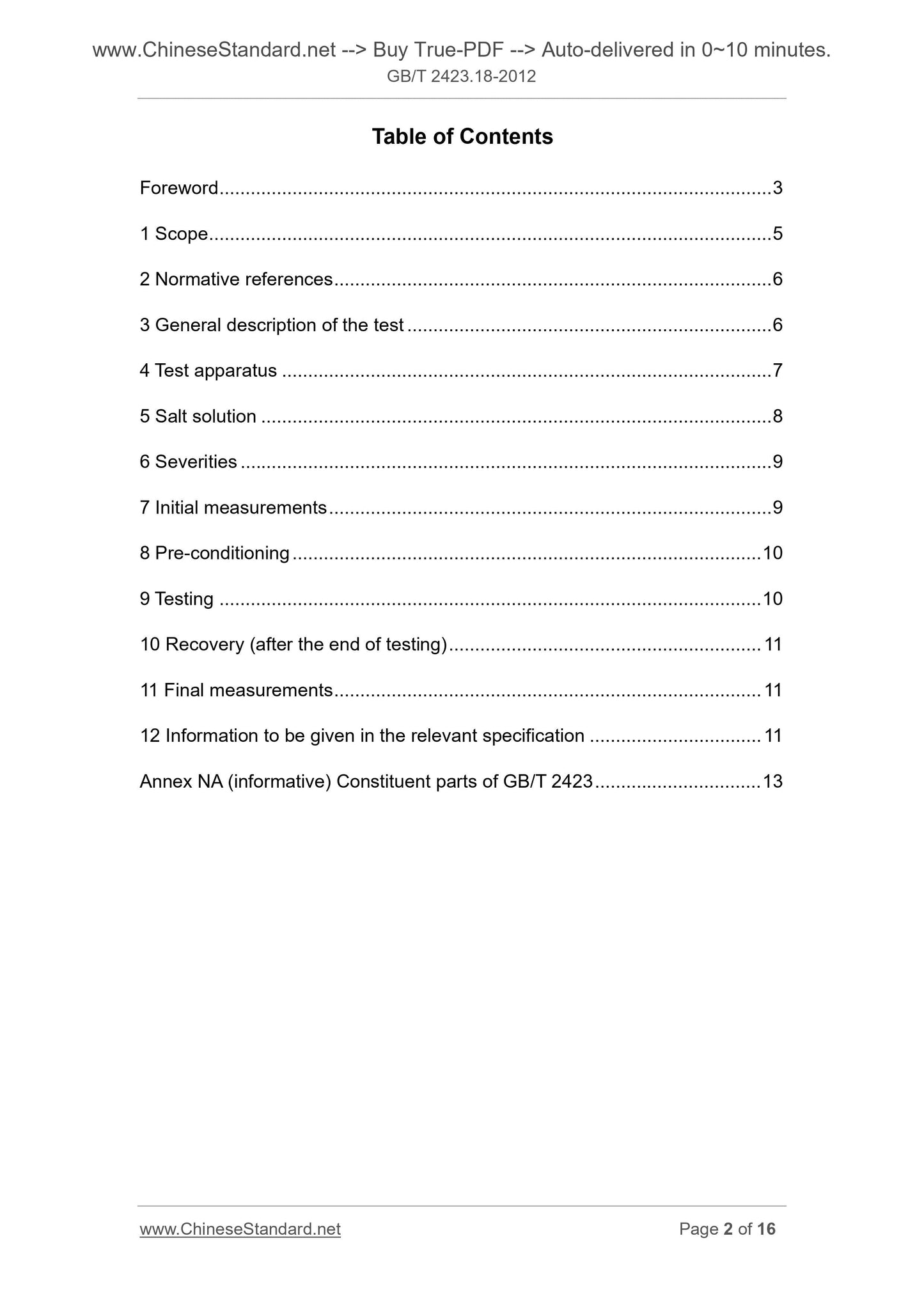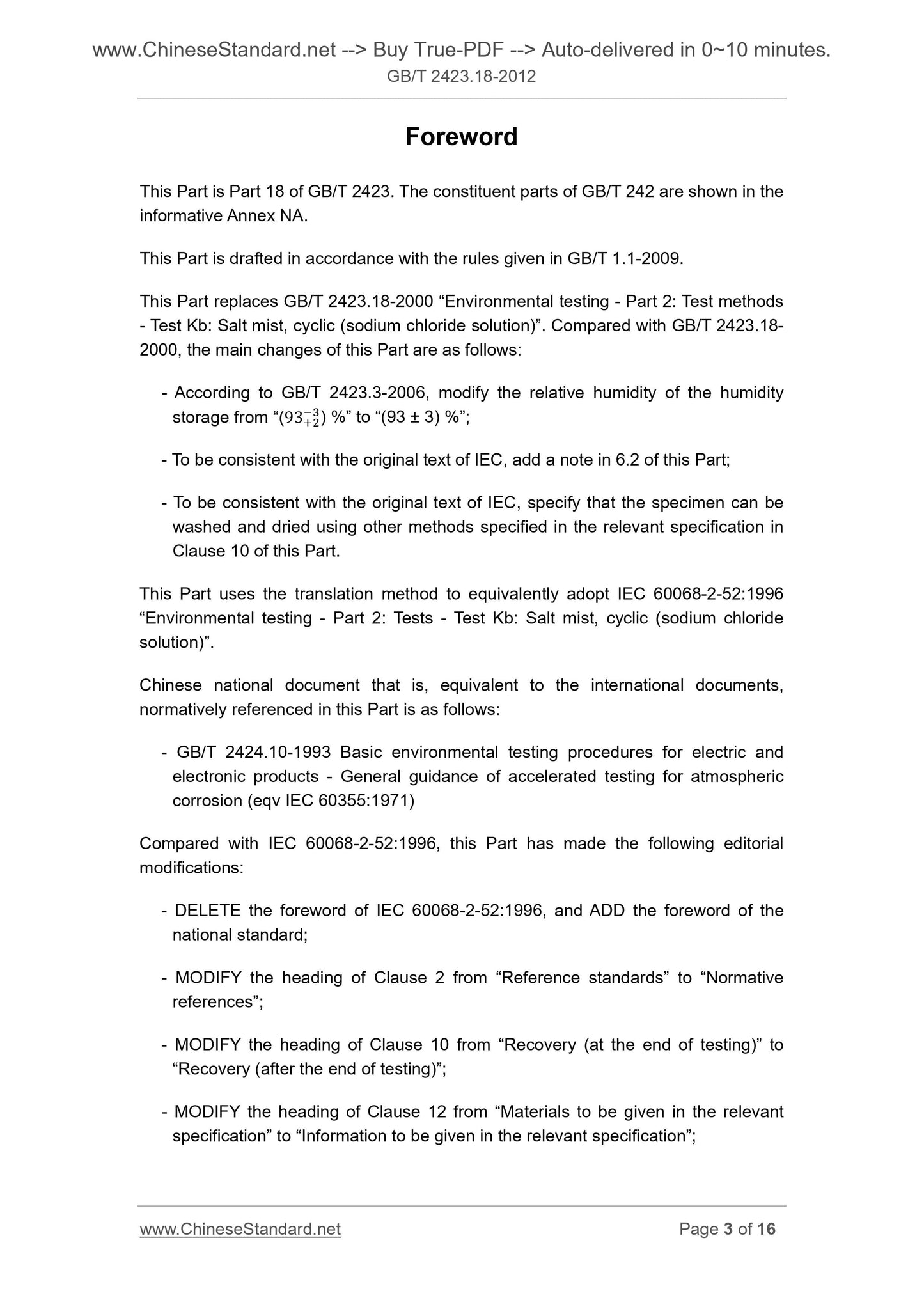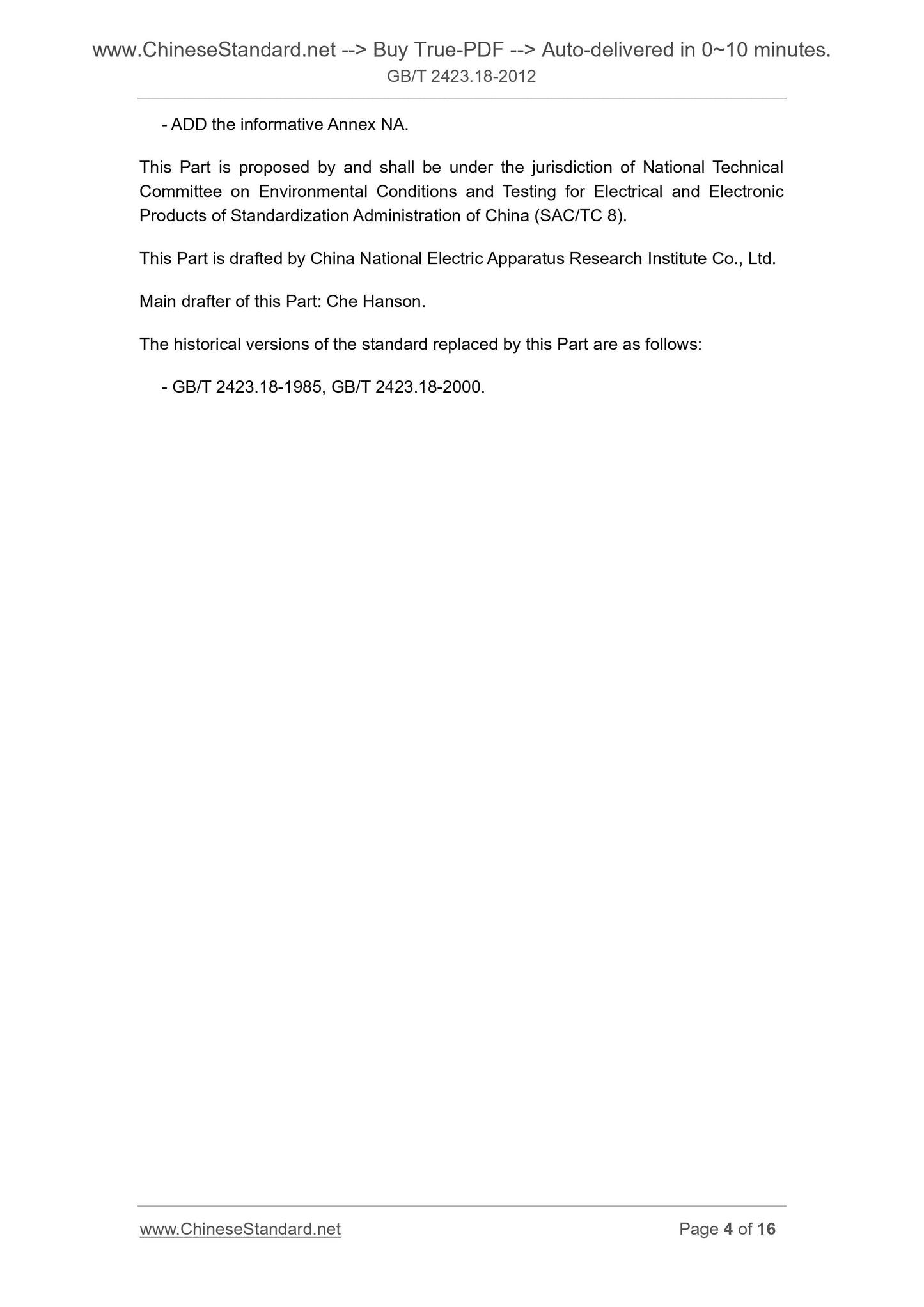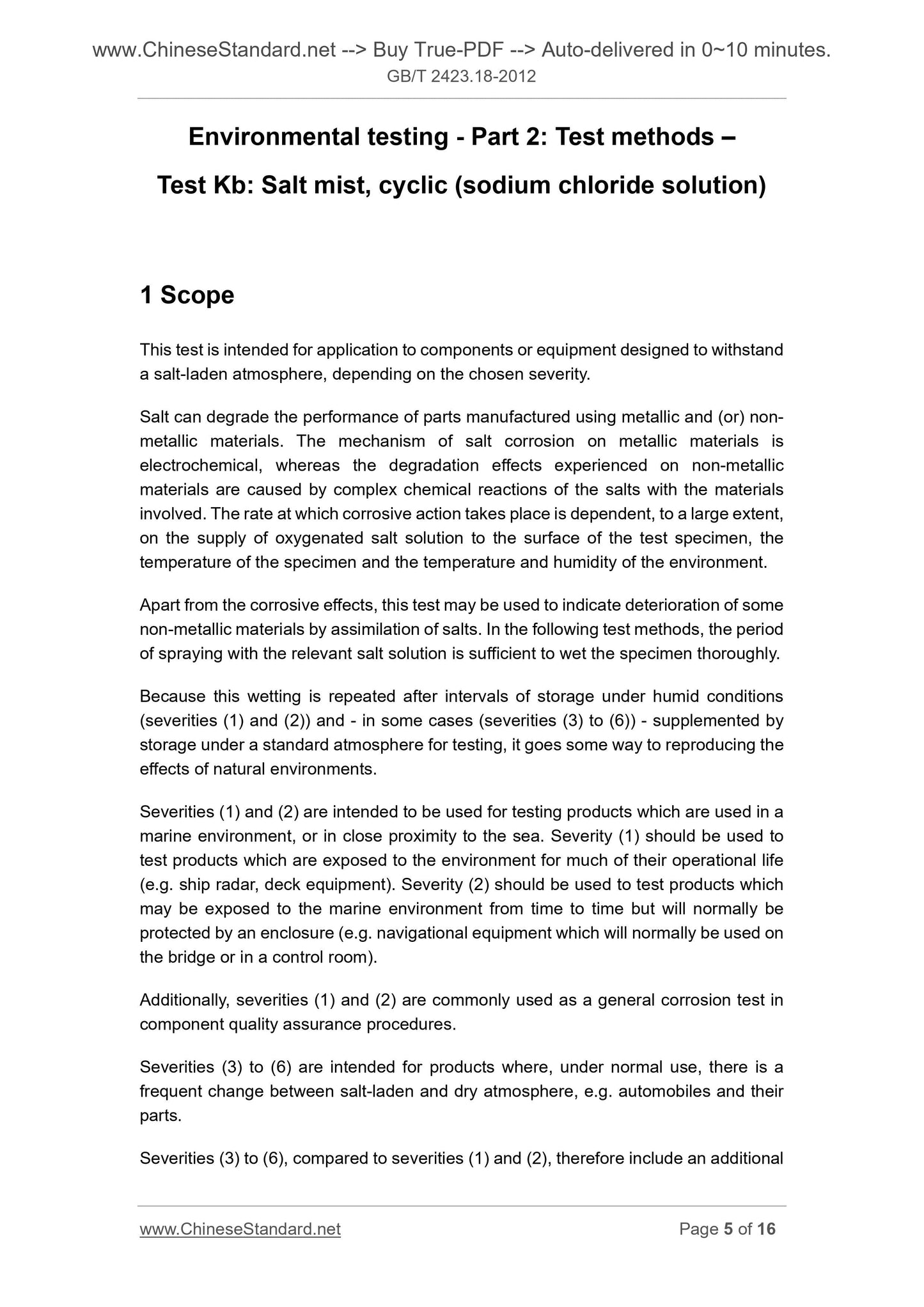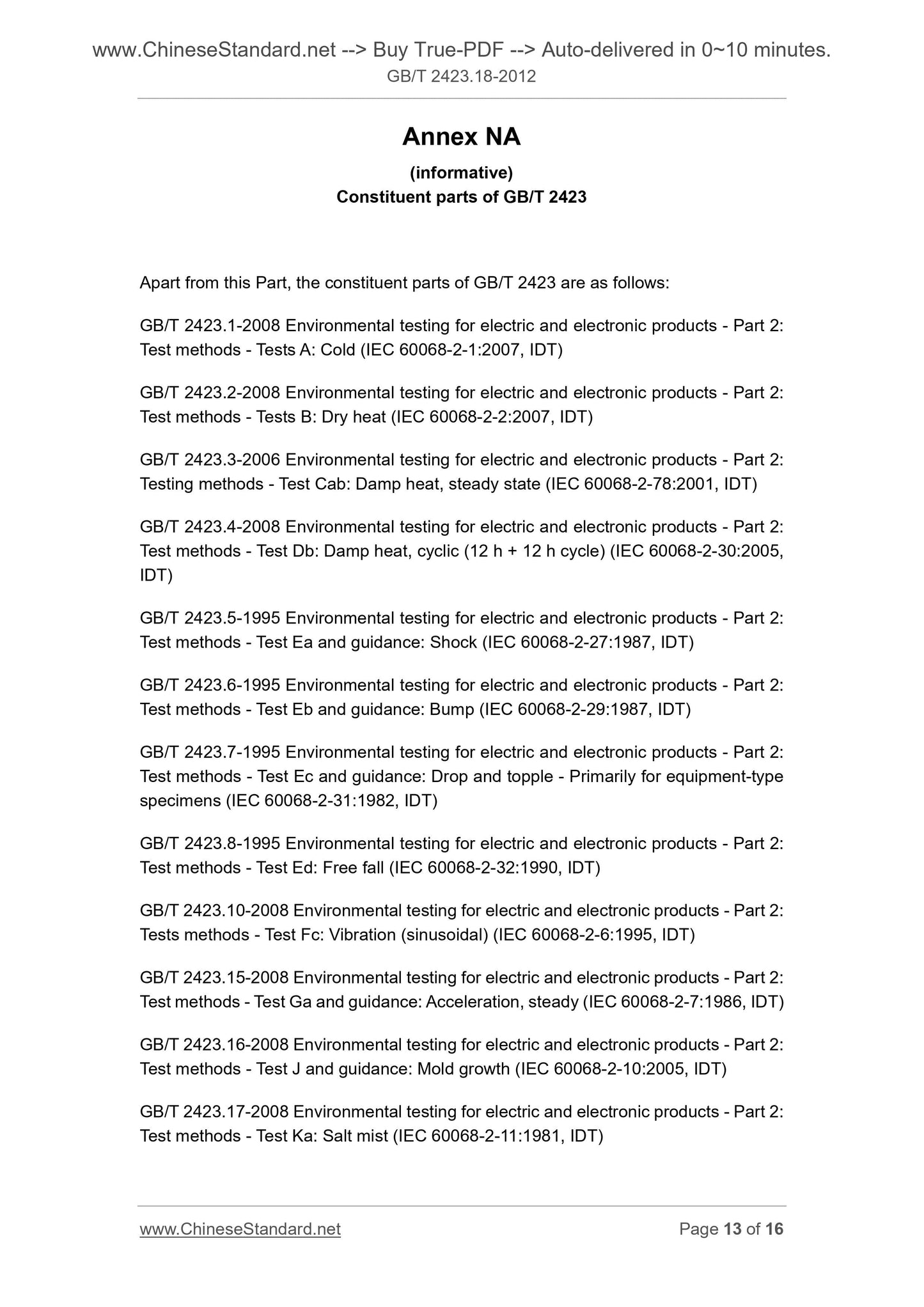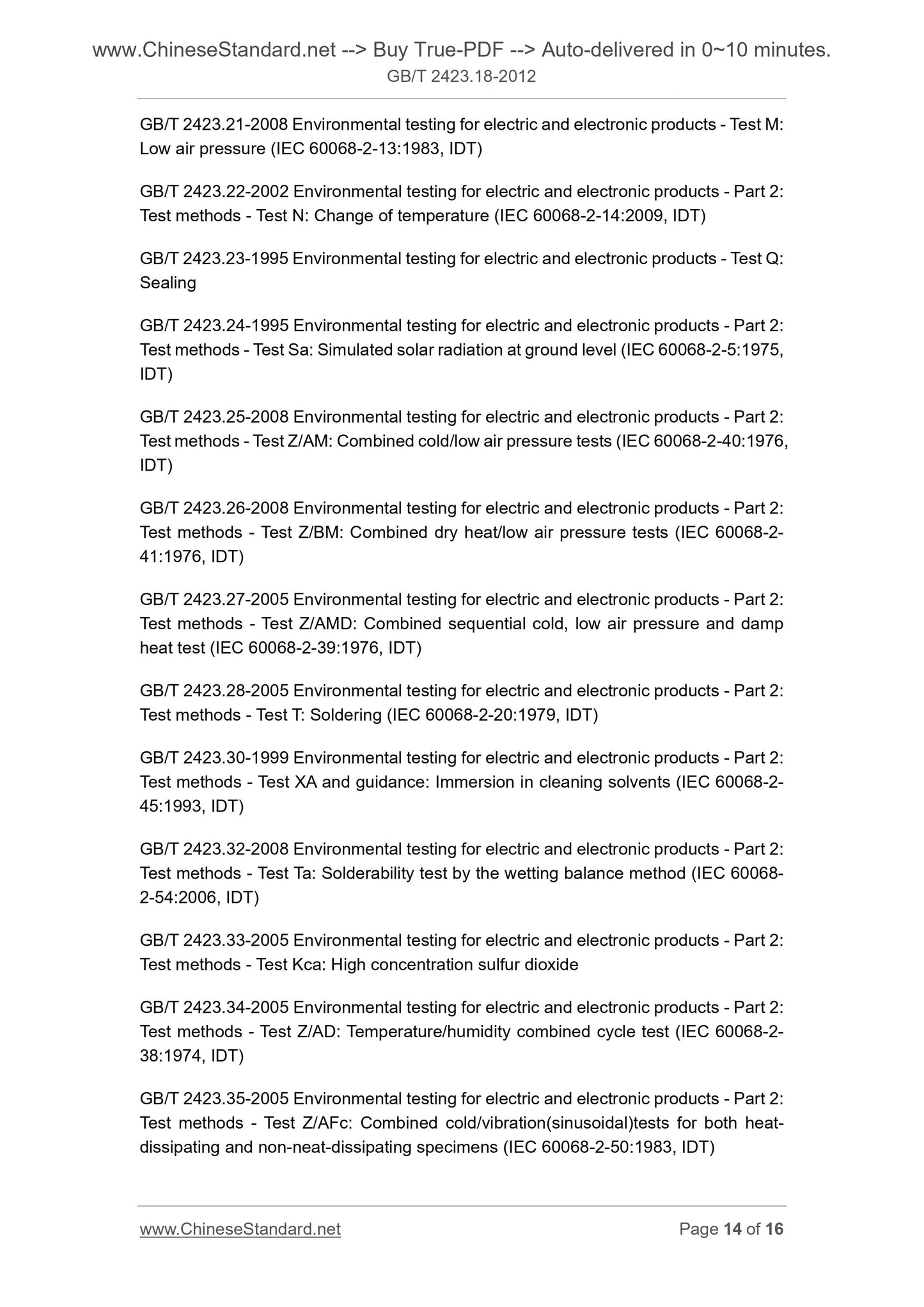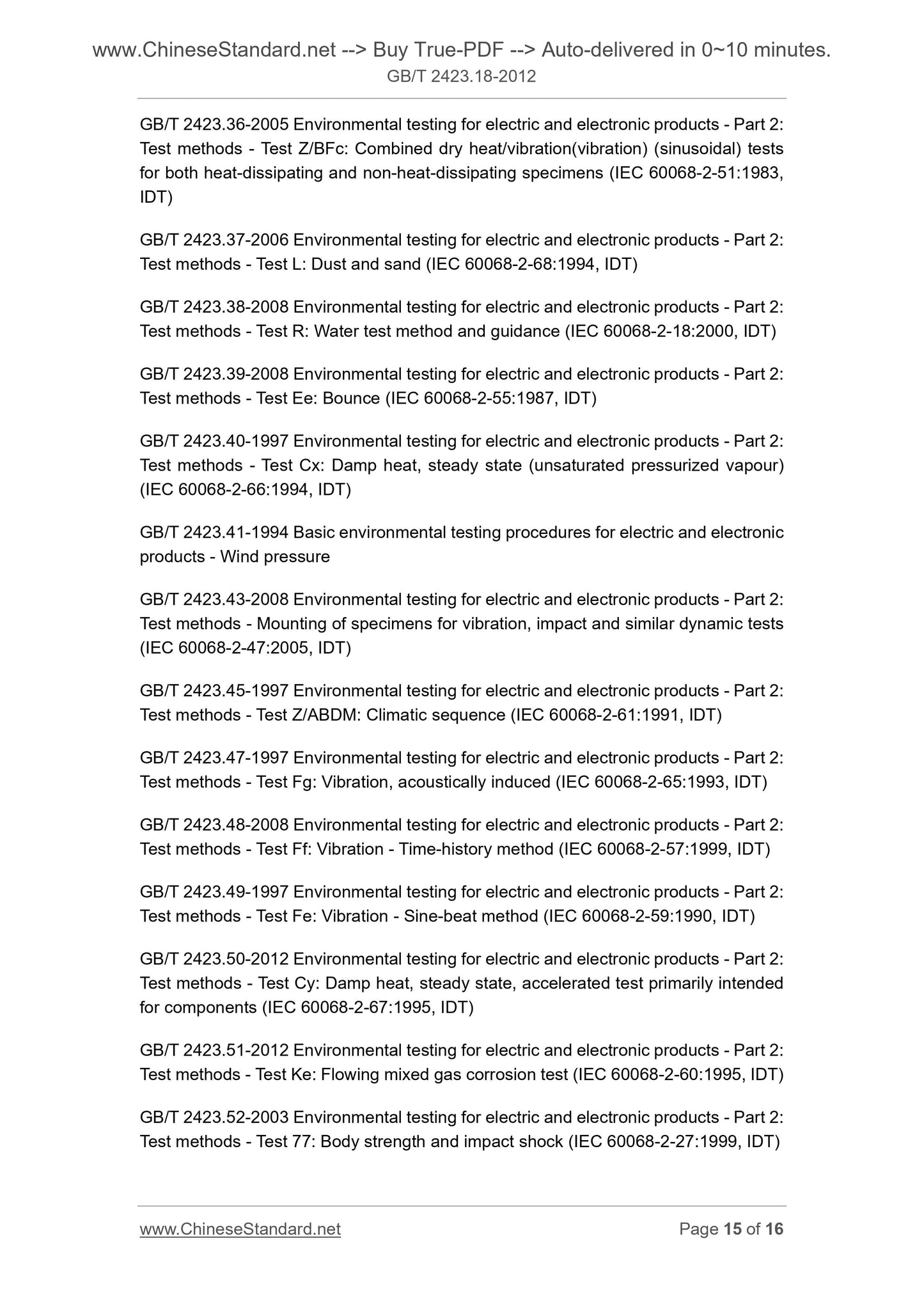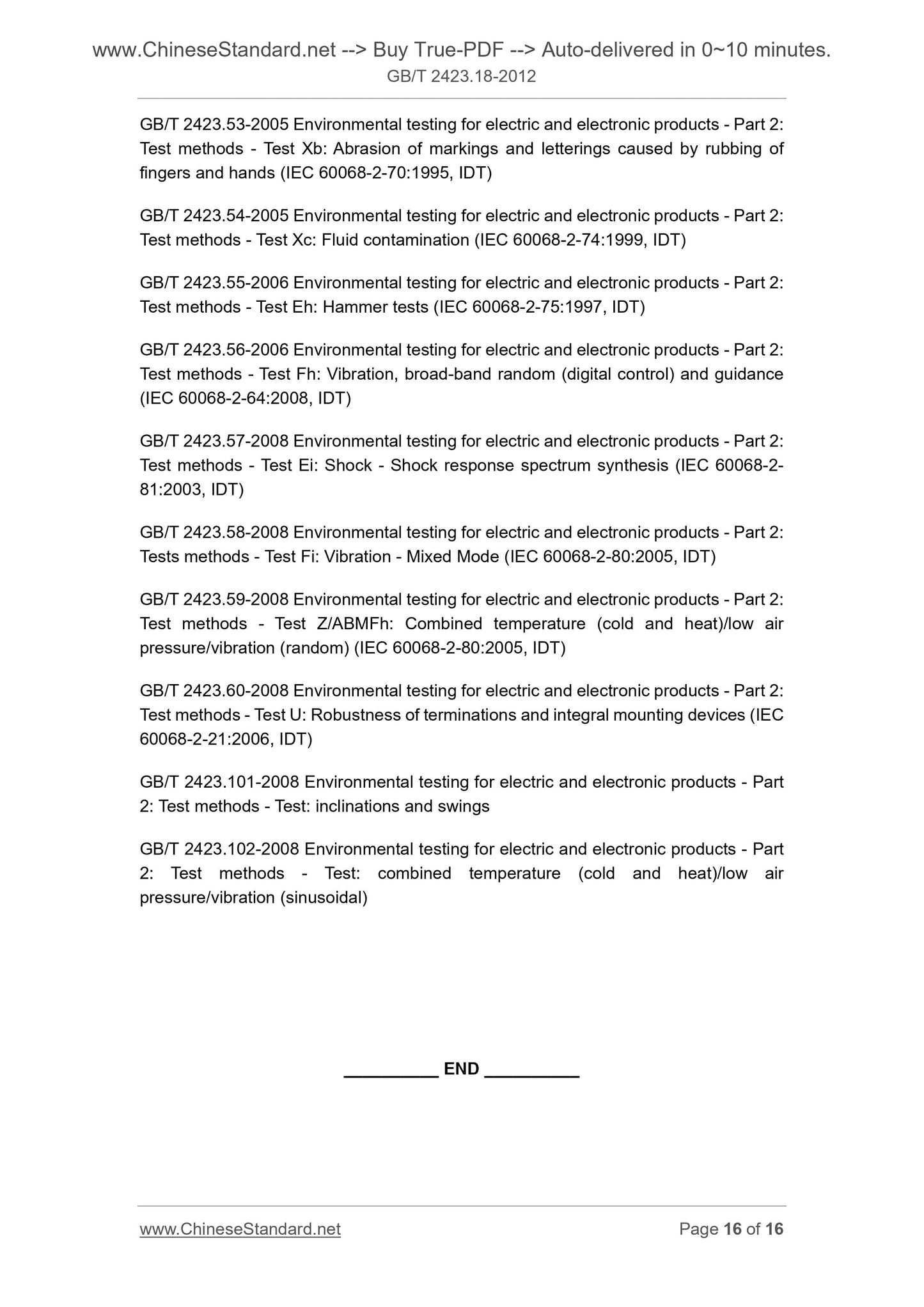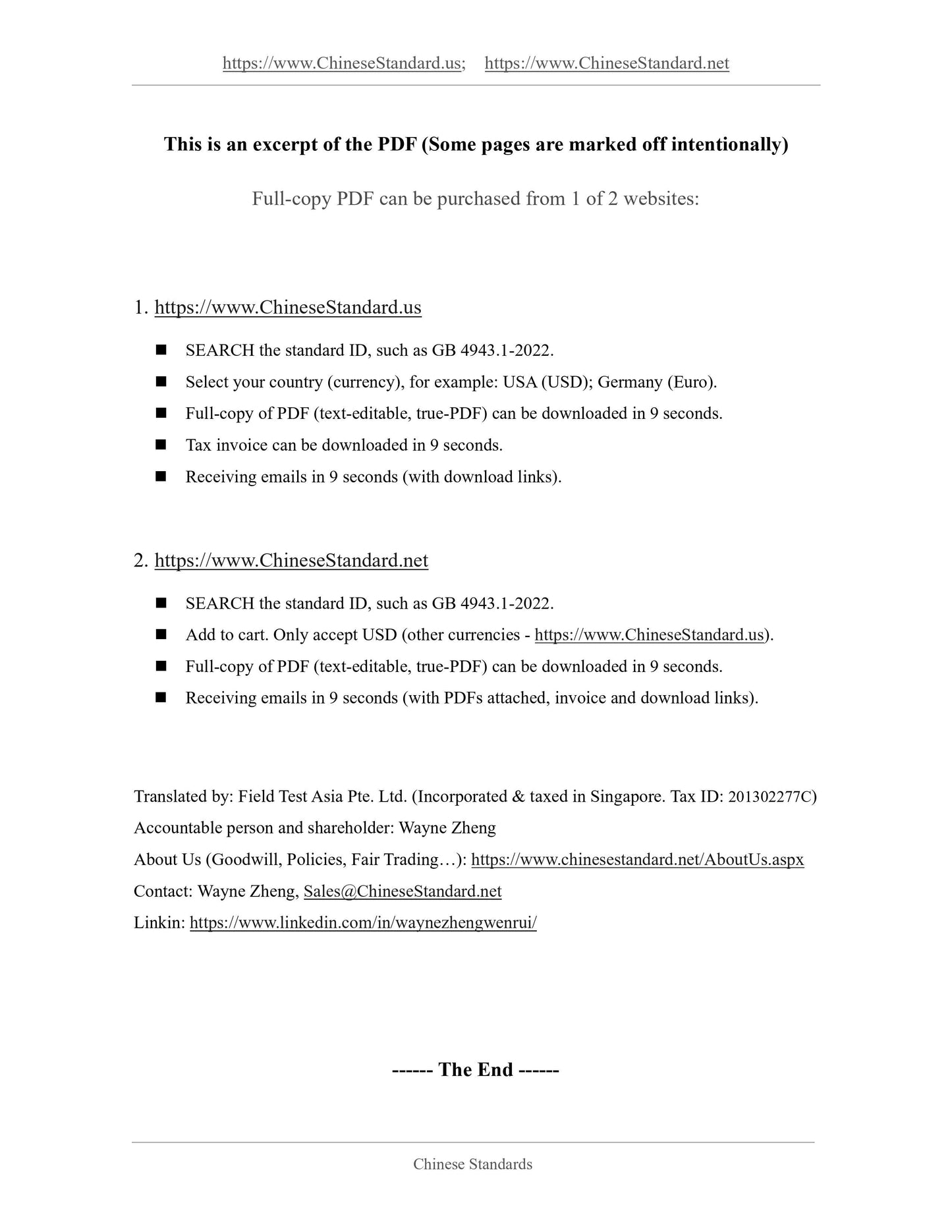1
/
of
10
PayPal, credit cards. Download editable-PDF and invoice in 1 second!
GB/T 2423.18-2012 English PDF (GB/T2423.18-2012)
GB/T 2423.18-2012 English PDF (GB/T2423.18-2012)
Regular price
$95.00
Regular price
Sale price
$95.00
Unit price
/
per
Shipping calculated at checkout.
Couldn't load pickup availability
GB/T 2423.18-2012: Environmental testing - Part 2: Test methods - Test Kb: Salt mist, cyclic (sodium chloride solution)
Delivery: 9 seconds. Download (and Email) true-PDF + Invoice.Get Quotation: Click GB/T 2423.18-2012 (Self-service in 1-minute)
Newer / historical versions: GB/T 2423.18-2012
Preview True-PDF
Scope
This test is applicable to elements or equipment intended to withstand salt-bearing atmospheres, and the corresponding harsh grades are selected according to their tolerance.Salt can reduce the performance of metal materials and/or nonmetallic materials. The mechanism of salt corrosion of metal materials is electrochemical corrosion, not metal
The deterioration of the material is caused by the comprehensive chemical reaction of the salt and the material. The rate of corrosion depends to a large extent on the supply of the sample surface
The amount of oxygenated salt solution, the temperature of the sample and the temperature and humidity of the environment.
In addition to showing the corrosion effect of this test, it can also show that some non-metallic materials due to the absorption of salt and the extent of deterioration. In the following test method
, The time of spraying the salt solution is sufficient to adequately wet the whole sample. Since this wetting is repeated after storage in hot and humid conditions (severe)
Grades (1) and (2)), and in some cases it is also possible to replenish the storage under the test standard atmosphere (harsh grades (3) to (6)), so it can be more effective
To reproduce the effects of the natural environment.
Severe levels (1) and (2) are applicable to testing products used in the marine environment or in offshore areas. Harsh rating (1) applies to the test
Most of the products exposed to this environment during service life (eg marine radar, deck equipment). Harsh rating (2) Applicable to trial possible
Often exposed to marine environments, but are usually protected by closed products (eg, usually in a bridge or in a control room).
In addition, the harsh grades (1) and (2) are usually used as general corrosion tests in component quality assurance procedures.
Severe grades (3) to (6) apply to products that are frequently used alternately between the salt atmosphere and the dry atmosphere, such as cars and their
part.
Thus, the harsh grades (3) to (6) contain an additional storage at the test standard atmospheric conditions compared to the harsh grades (1) and (2).
In fact, during the interruption of work, for example at weekends, a dry atmosphere may appear. This is included in the harsh grades (3) to (6)
The drying stage leads to a mechanism that may be completely different from that under constant hot and humid conditions.
The test method is faster than the use condition. But this test method can not be for a variety of different types of samples to establish a comprehensive
Acceleration factor (see IEC 60355.1971).
Basic Data
| Standard ID | GB/T 2423.18-2012 (GB/T2423.18-2012) |
| Description (Translated English) | Environmental testing - Part 2: Test methods - Test Kb: Salt mist, cyclic (sodium chloride solution) |
| Sector / Industry | National Standard (Recommended) |
| Classification of Chinese Standard | K04 |
| Classification of International Standard | 19.040 |
| Word Count Estimation | 12,145 |
| Older Standard (superseded by this standard) | GB/T 2423.18-2000 |
| Quoted Standard | GB/T 2421.1-2008; GB/T 2423.3-2006; IEC 60355-1971 |
| Adopted Standard | IEC 60068-2-52-1996, IDT |
| Regulation (derived from) | National Standards Bulletin No. 28 of 2012 |
| Issuing agency(ies) | General Administration of Quality Supervision, Inspection and Quarantine of the People's Republic of China, Standardization Administration of the People's Republic of China |
| Summary | This standard applies to a predetermined tolerance of salinity atmospheric components or equipment, test selection based on their tolerance level corresponding severities. Metal salts can be reduced and (or) the performance of non-metallic materials. Corr |
Share
